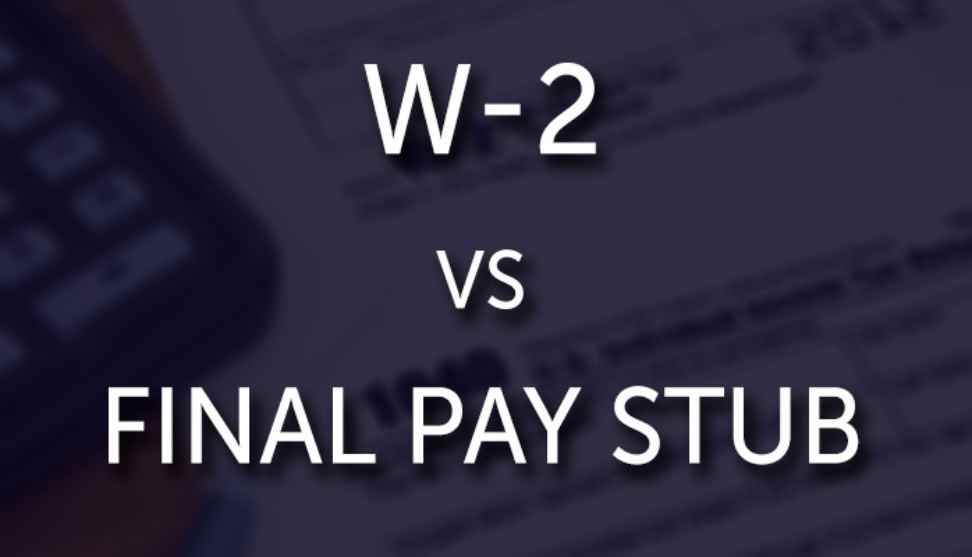When it comes to understanding your earnings, taxes, and overall financial picture, two key documents play a significant role: the paystub and the W-2 form. While both are essential for managing your income and taxes, they serve different purposes and contain distinct information. In this article, we will explore the differences between a pay stub and a W-2 to help you understand their roles in your financial life.
Key Differences:

Overview of Paystub
- A pay stub, also known as a paycheck stub, is a document provided by your employer each time you receive a paycheck.
- It details the breakdown of your earnings for a specific pay period, including gross pay, deductions, and net pay.
- A paystub typically includes information such as your name, pay period dates, hours worked, rate of pay, and any deductions for taxes, benefits, or other purposes.
Overview of W-2 Form
- A W-2 form is an annual document provided by your employer that summarizes your total earnings and tax withholdings for the year.
- The W-2 includes essential information like your total taxable wages, Social Security and Medicare taxes withheld, federal and state income tax withheld, and other relevant data.
- You receive your W-2 form by the end of January each year, which you use to prepare your annual tax return.
Content Comparison
- Paystub focuses on specific pay periods and provides a detailed breakdown of your earnings and deductions for that period.
- W-2 encompasses your total earnings and tax withholdings for the entire calendar year, providing a comprehensive summary of your income and tax obligations.
Purpose Differences
- Paystub: This helps you track your earnings and deductions and understand how your paycheck is calculated each pay period.
- W-2: Essential for filing your annual tax return, as it documents your total income and tax withholdings for the year.
Paystub vs. W-2: Understanding the Key Differences
In the realm of employment and taxation, two essential documents play a crucial role in understanding one’s earnings and tax obligations: the pay stub and the W-2 form. While both documents provide information about an individual’s income, they serve distinct purposes and contain different sets of data. Let’s delve into the significant disparities between pay stubs and W-2 forms to gain a comprehensive understanding of their roles and implications.
Pay Stub: Unveiling Gross Earnings
A pay stub, also known as a pay slip or paycheck stub, is a document that employees receive from their employers each pay period. It outlines the details of an employee’s gross wages for that specific pay period. The pay stub typically includes information such as the total amount earned before any deductions, taxes, or withholdings are applied. It acts as a detailed breakdown of an employee’s earnings, providing transparency regarding the components that contribute to their total pay.
W-2 Form: Unraveling Taxable Earnings
On the other hand, the W-2 form, officially known as the Wage and Tax Statement, is a mandatory document that employers must provide to their employees at the end of each calendar year. The W-2 form summarizes the employee’s regular annual earnings and the amount of taxes withheld from their pay throughout the year. It is a crucial document for filing income taxes and provides detailed information about an individual’s taxable income and tax liabilities.
Distinguishing Factors Between Pay Stubs and W-2 Forms
- Gross vs. Taxable Income: Pay stubs showcase gross earnings before deductions, while W-2 forms reflect taxable wages after accounting for pre-tax deductions and withholdings.
- Pre-Tax Deductions: Pay stubs may include pre-tax deductions like health insurance premiums and retirement contributions, which reduce taxable income reported on the W-2 form.
- Non-Taxable Benefits: Non-taxable benefits, such as reimbursements or fringe benefits, may appear on pay stubs but are excluded from taxable income on W-2 forms.
- Tax Withholdings: W-2 forms provide a detailed breakdown of tax withholdings, including federal, state, and local income taxes, offering a comprehensive view of an employee’s tax liabilities.
Significance of Using a Paystub Generator
- A Paystub Generator is a useful tool that allows individuals to create accurate paystubs for their records or when applying for loans, rentals, or other financial purposes.
- Using a Free Paystub Generator can help you easily generate detailed paystubs with all the necessary information required by employers or financial institutions.
Conclusion
In conclusion, understanding the differences between a pay stub and a W-2 form is crucial for managing your finances effectively. While a paystub provides a detailed breakdown of your earnings for each pay period, a W-2 offers a comprehensive summary of your income and tax withholdings for the entire year. Both documents play a vital role in ensuring financial transparency and compliance with tax regulations. By utilizing a Free Paystub Generator, you can easily create accurate paystubs to track your earnings and financial transactions. Remember, staying informed about your pay and tax information empowers you to make informed financial decisions and achieve your financial goals.
Must Read :
- How To Use Ingramer?
- How To Use Dumpor Instagram Viewer?
- Unleash The Power Of World777: Unlocking Exclusive Bonuses!

